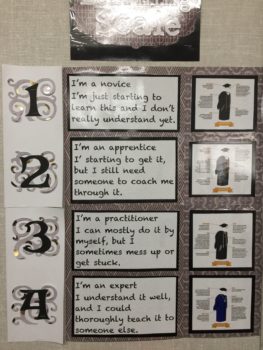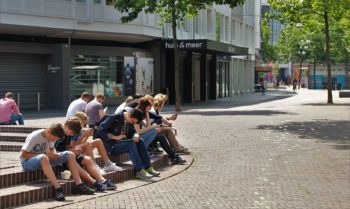Ten Strategies to Ensure Student Success
 Ten Strategies to Ensure Student Success
Ten Strategies to Ensure Student Success
Our staff met these past few weeks to reflect on the many successes that we have achieved with our students this school year.
Student Engagement in Learning and Their School Communities
Here are our top ten strategies for student success:
- Our high school students are fully engaged once again in their daily school activities after distance learning. They use their talents, skills, and voice to produce creative projects through media art classes that include film and photography projects.
- The leadership team creates monthly social activities that include group movie nights, lunch time rallies, a twin day, a pajama day, and a pie in the face of an administrator day. The all-time favorite was when the students dyed the hair of an administrator.
- The students’ ongoing academic growth is impressive at the 8th and 12th grade levels because these students lost 18 months of face-to-face learning without social interactions with their teachers and peers.
- All students are achieving significant milestone growth at each reporting period.
- Our afterschool study hall provides students with academic teacher support by using supplemental materials for acceleration.
- The student clubs are supported by teachers and support our English learners in their language development. Favorite student clubs include the chess club, film, volleyball, an adventure club with science and nature activities, and a cooking club that focuses on cooking culturally diverse recipes.
- The teachers collaboratively support each other at the many academic activities to foster cooperation and team work.
- We have a larger pool of students in our senior class who are eligible to attend four-year universities and colleges.
- Teachers and parents can now attend student sporting events since the COVID restrictions have been lifted for attendance.
- Our major event for the year was a “trunk or treat event” in October. Nearly 25 cars were decorated by the students with open trunks full of candy for students and their families. The high school media arts class decorated cars along with the advisory groups. The community attendees voted on the best decorated car. Community agencies provided community services. A community vendor provided reduced cost foods as a donation for the event. And staff members performed in a folklorico dance group. This celebration of our school community truly showcased the vibrance of our students and their many achievements.
Much success as your school’s staff creates spring and summer activities to celebrate your school’s families and their children’s many achievements this past school year.
 Consider Your Children’s Needs for School Choice
Consider Your Children’s Needs for School Choice What Does an Engaged Classroom Look Like?
What Does an Engaged Classroom Look Like? reflect weekly on relevant activities. Your child can illustrate ideas, brainstorm new projects or concepts, or graph a workplan using different types of art materials in the journal.
reflect weekly on relevant activities. Your child can illustrate ideas, brainstorm new projects or concepts, or graph a workplan using different types of art materials in the journal. questions with your child when considering the information presented in the two different articles:
questions with your child when considering the information presented in the two different articles: